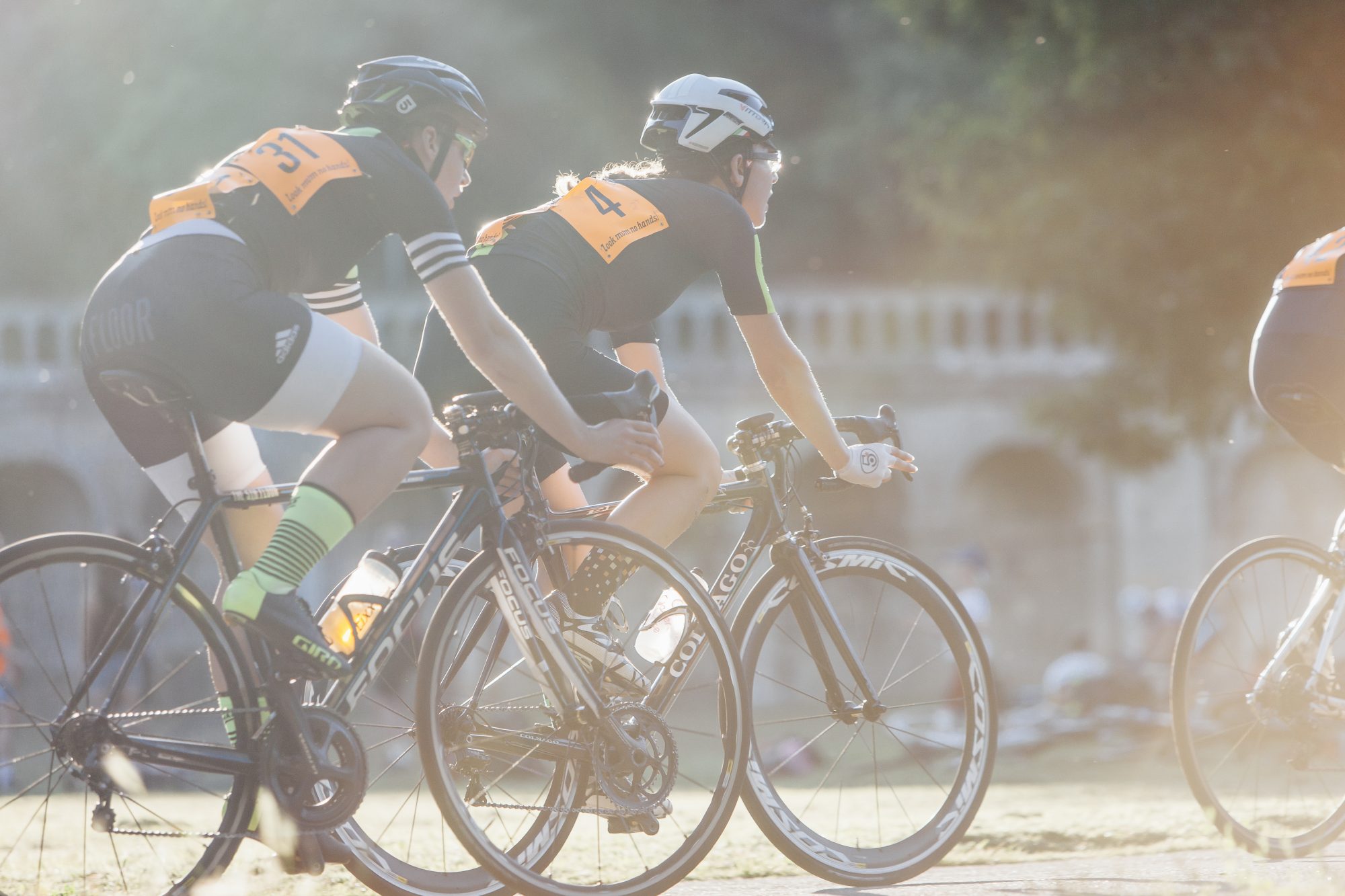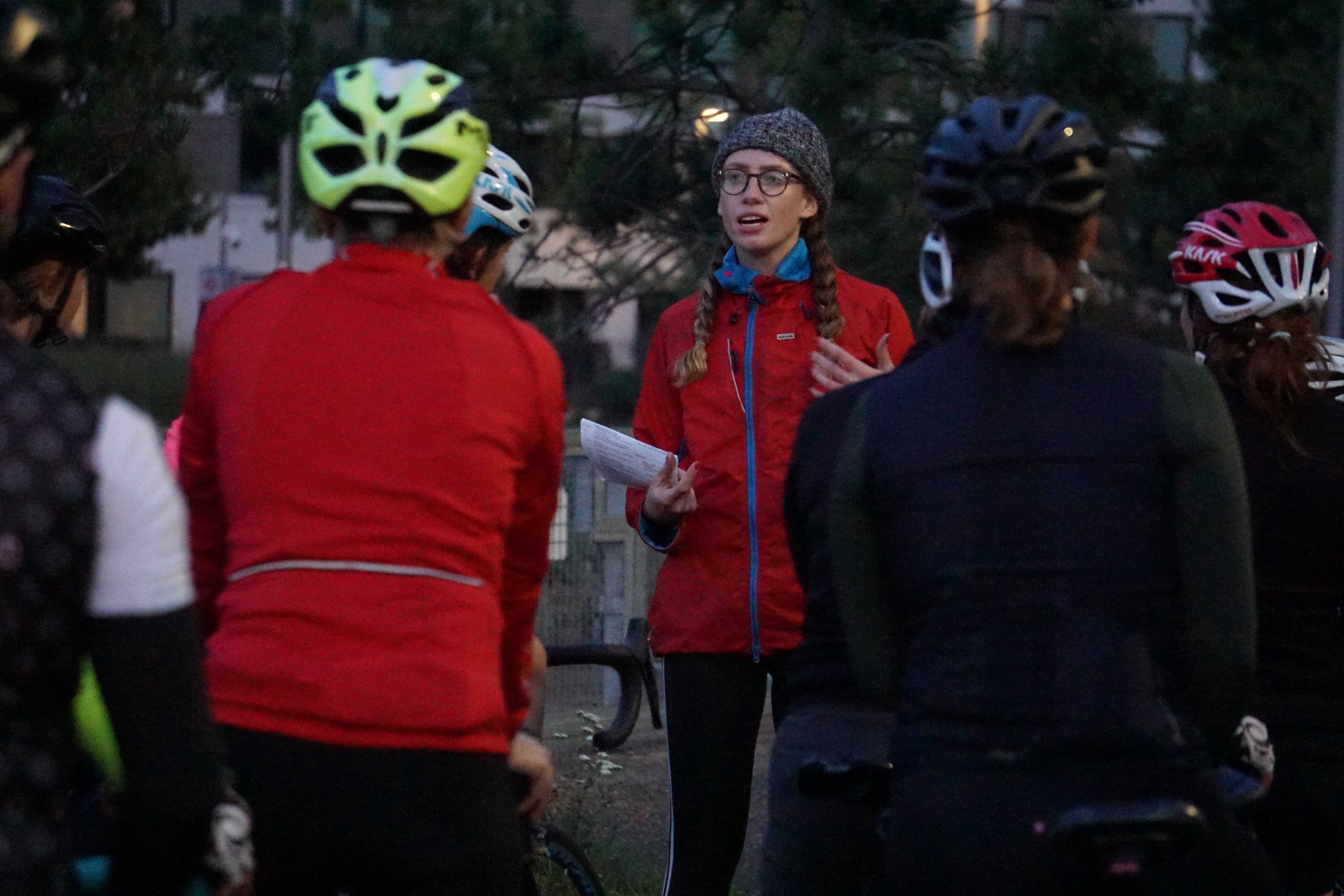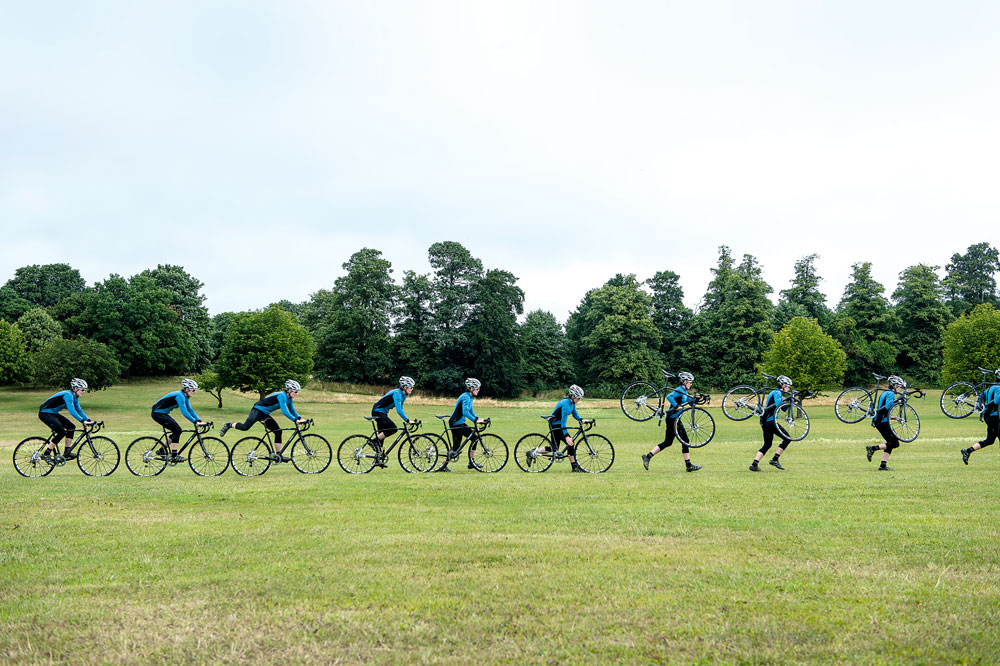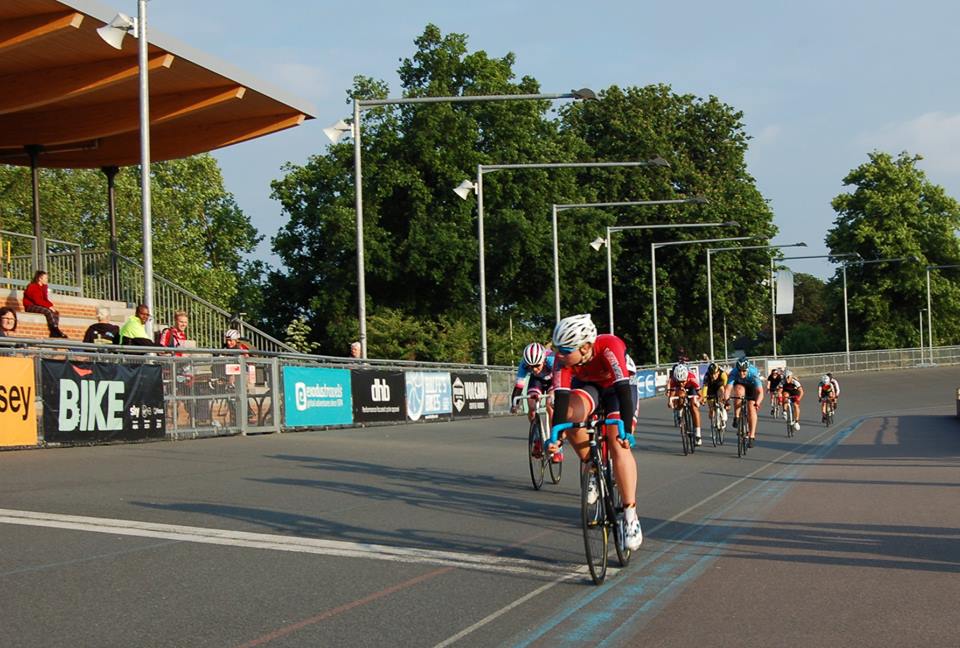What do women want?: How to build a thriving women's race league
With some local women's races cancelled due to lack of entry and others thriving, what are the success stories doing to get it so right? Cycling Weekly investigates the secrets of successful women's race organisers


“Calling all female riders – please enter our race, or we'll be forced to cancel.” And it’ll be your fault. Yes, you. Specifically you, your granny’s 80th birthday is not a sufficient excuse.
The call outs to enter, occasionally exuding a thinly veiled air of passive aggression, adorn the social media feeds of most amateur female racers from the first signs of summer to its end.
And yet, drop in at the final round of the Herne Hill Velodrome track league and take a look at the 50 women racing across three categories, or flick through pictures of the 163 women racing the Velobants CX in the City race, and you’d never believe we had a participation problem.
No one wants to see races folding through lack of entry when organisers have poured time and money into bringing them to fruition. So, what’s the secret behind the success stories?
Build from the bottom

Just because a group is a minority, it doesn't make it homogeneous. A first time racer is going to want something quite different to an elite.
Most of the leagues which have successfully built up high attendance have focused their efforts on the beginners, who can then go on to feed higher profile events should they have a good experience. And that makes sense: nationally there are 15,222 senior male license holders versus 1,936 women. The pool of riders is growing, quickly, but there's still work to do.
Get The Leadout Newsletter
The latest race content, interviews, features, reviews and expert buying guides, direct to your inbox!
"We turned the focus triangle upside down and put our energies into the bottom – the beginner," said Elle Haigh, founder of Ride Like a Girl, a women's racing community based in Yorkshire.
Existing mainly via an open entry Facebook group, Ride Like A Girl was inspired by two first timers who didn’t feel ready to jump into the all category races only to be “lapped 30 times over”.
Their first event - a 'Go Race!' suitable for beginners - attracted 70 sign-ups. Ever since the group has been working with local organisers to promote their races, resulting in maxed out start lists like that of the Seacroft Wheelers 3/4 Women's Road Race.
"The majority of licence holders in our region are category three or four, narrowing to focus on them increased the amount of people able to have a fair race,” says Haigh.

Promoting more races for entry level riders can have an impact on the number of available events for experienced number-pinners. At some venues, continuing with all category fields may be the only option to allow everyone to have a race at all - a bulging 3/4 race with a few unhappy looking E12's doesn't do progression any favours.
To combat this, London's Velociposse held a series of training sessions this September - 50 women took part and half of them went on to try a novice women's criterium at the end of the series.
Thea Smith, Velociposse member and BC coach, said: "Some of the women who came to our sessions would now be happy to turn up to an all category E/1/2/3/4 race next week if one was available. It's just building the confidence to be able to get to that start line."
Founded in 2015 as a race team, Velociposse re-established itself as a club in 2017. With several qualified British Cycling coaches within the ranks, they're all about development - something they've done successfully, being responsible for the progression of riders like Eeva Sarlin, who began riding with Velociposse before moving to Belgium to race full time this year.
"As a club, we're very much about trying to reach women who hadn't considered racing before and helping them take the first steps in that journey. We're about feeding women through and getting them racing at a higher level - even if that means they move on from us," says Smith.
Put on skills sessions in the lead up to races

Intimidation and fear of some unknown failure are common themes tossed around on any start line, and several organisers have put on skills sessions specifically to tackle this.
It was a tactic which worked for Velobants.cc.
“The club put on three sessions at the event location, in the run up, so women could pre ride the course and see what they had to tackle prior to race day," explains Fran Whyte, a club member and operations manager at VeloVixen women’s cycling retailer.
>>> Guide to racing cyclocross
“Additionally we contacted Helen Wyman, who is an excellent ambassador for cyclocross. She helped us make a series of skills videos which we released on social media, we called them ‘Wyman Wednesday’ and each video featured one top pro tip.”

Velobants also created a detailed event page, something noted by Team LDN’s Liz Hughes, who rode from the back of a gridded field to take eleventh on the day.
“[They had] a great page about the race, what to expect, and answers to just about every question you could think of asking. Any first timer or nervous racer had all the information they could possibly need about course, getting there, how to enter, what to expect,” she said, adding “it was totally amazing to see so many women on the start line.”
https://www.youtube.com/watch?v=saVO7lBFKwM
Another organiser that’s seen great success through skills training is Herne Hill Velodrome in south London.
This year's AssosLDN Women's league was attended by around 90 riders, competing in three categories - the As containing national standard riders, the Cs a perfect beginner's playground and the Bs a stepping stone in the middle.
The league has grown year-on-year, far exceeding numbers seen at track events elsewhere in the city.
Sam Holden, Herne Hill's women's cycling development officer, puts a lot of the success down to weekly AssosLdn Women’s sessions, every Sunday from 5pm-7pm.
"Creating a coaching environment where riders of all abilities feel welcome, engaged and challenged, through good coaching practice and constantly being aware of the dynamics of the group is crucial," Holden says.
"Everyone, no matter what their level of skill or experience, reason for riding or background, must feel like they are welcome at our training sessions and race events. A dedicated women-only session is key to this, as it's far easier to foster collaboration, communication and peer-to-peer support in such an environment."

Come summer, race workshops focus on specific track disciplines that will feature in the next round of the AssosLdn Women’s League, be it team pursuit, devil or flying 200, so that newer riders have the chance to sharpen their skills ahead of competition.
It's unlikely a rider is going to contemplate road racing unless they've already got a bike. But in less popular disciplines such as track, hire options can help lower the barrier to entry.
>>> Nine reasons to try track cycling this winter
At Herne Hill, there's long been a fleet of hire bikes available for training sessions, but there was a key component causing a lot of discomfort among women until earlier this year.
“Through rider feedback we were made aware of how uncomfortable the saddles on our hire bikes were. They were mostly old, designed for men and not very comfy for women. I spoke to Giant/Liv and they kindly supplied us with over 30 female specific saddles for our hire bikes," Holden told us.
“This has increased comfort for newer riders. It also clearly signals to potential riders that HHV is genuinely committed to increasing female participation, we’re not just trying to tick a box," he added.
Whyte also noted the bike as a barrier to entry in cyclocross, saying: "No one wants to pay £800 on a bike if they are unsure if they would like the discipline. Central region British Cycling came along to our event with a host of demo bikes women could use and race on to give it a go."
Use social media to create a thriving community
Social media is like pretty much any tool: you can use if effectively to great good, or poorly to your detriment.
Velobants worked tirelessly to amplify their race via social channels, with a tone of voice that went down particularly well.
The Hargroves Southdown Velo series, at Goodwood motor circuit, is another series which puts a lot of its success down to online communication.
Launched in 2014, in the inaugural year only three women took part, racing alongside the men. In 2019, numbers had swelled to 70.
Event organisers Tracy Webb told us: “Social media has proved the best way to promote, and I ask riders to push for us too. I tag everyone who may be interested, and ask riders to tag their friends and team mates.” That includes my own team, 1904rt.
“The 'Goodwood Girls' encourage each other through our Facebook group and messenger. I think the numbers are driven by the generally supportive atmosphere,” she added.
Herne Hill Velodrome has an active Facebook group as well as Instagram feed, run by the riders who shared stories of key protagonists across all categories ahead of the race kick off.
"Cycling as a sport has been historically male dominated - but women are socially conditioned differently. To draw women in, you need to build communities around their demographic. It makes it less imposing, a less threatening environment," says Heather Bamforth - trustee at the Racing Chance, a charity set up to promote women's cycling in the UK.
A member of British Cycling's Women's Workgroup, Bamforth added: "Generally, the races with a strong social media presence do well because we can use it to build communities. One woman will say they're going, another will join her, and suddenly they're all going to the race together and it's empowering, not intimidating."
Organisers struggling to promote women's racing often bemoan the time and effort taken to recruit female racers, when filling a men's field can happen with little encouragement.
But that initial bulk of hard work can plant its own seeds - among a field which represents the fastest growing segment of license holders. Even for the business minded - surely that's a revenue stream worth tapping into?
"I think women’s cycling is thriving at HHV largely because of the women themselves. The structure is in place, and we encourage participation, rider development and progression, but the fact that we have so many inspiring, friendly, motivated and passionate women riding means that newer riders can easily feel comfortable, seek advice and become aware of how to progress within the sport simply by being part of the group," Holden says.
"Once that momentum builds, it feeds itself."
Quick fire tips...
Select 'women's race'
Sounds obvious, but it doesn't always happen. British Cycling's calendar is vast. Where men are likely to filter by category or radius, most women will select 'women only' - which immediately cuts the number of available races down by a fraction. If you've not listed your race as a women's race, women won't see it.
Check for clashes
There are fewer female racers on the scene. As much as we may not enjoy multiple hour car journeys to races, it's not going to be possible to offer the same amount of choice as men get and still enjoy good sized fields. So organisers need to check for calendar clashes across a larger area.
Pick 'show entrants'
No one wants to show up at a race and discover that they're the only person on the start line. Allowing riders to see who else has entered builds momentum.
If one thing is going to kill a local crit series, it's an expected low entry rate. If women know the field size is minimal week on week, they'll be less inclined to travel. Some events have tackled this with 'buy one get one free' entry - that way each rider brings a friend which immediately doubles the numbers. Once it's common knowledge that the race is always guaranteed to be a good one, the rest looks after itself.

Thank you for reading 20 articles this month* Join now for unlimited access
Enjoy your first month for just £1 / $1 / €1
*Read 5 free articles per month without a subscription

Join now for unlimited access
Try first month for just £1 / $1 / €1
Michelle Arthurs-Brennan the Editor of Cycling Weekly website. An NCTJ qualified traditional journalist by trade, Michelle began her career working for local newspapers. She's worked within the cycling industry since 2012, and joined the Cycling Weekly team in 2017, having previously been Editor at Total Women's Cycling. Prior to welcoming her first daughter in 2022, Michelle raced on the road, track, and in time trials, and still rides as much as she can - albeit a fair proportion indoors, for now.
Michelle is on maternity leave from April 2025 until spring 2026.
-
 Gear up for your best summer of riding – Balfe's Bikes has up to 54% off Bontrager shoes, helmets, lights and much more
Gear up for your best summer of riding – Balfe's Bikes has up to 54% off Bontrager shoes, helmets, lights and much moreSupported It's not just Bontrager, Balfe's has a huge selection of discounted kit from the best cycling brands including Trek, Specialized, Giant and Castelli all with big reductions
By Paul Brett
-
 7-Eleven returns to the peloton for one day only at Liège-Bastogne-Liège
7-Eleven returns to the peloton for one day only at Liège-Bastogne-LiègeUno-X Mobility to rebrand as 7-Eleven for Sunday's Monument to pay tribute to iconic American team from the 1980s
By Tom Thewlis